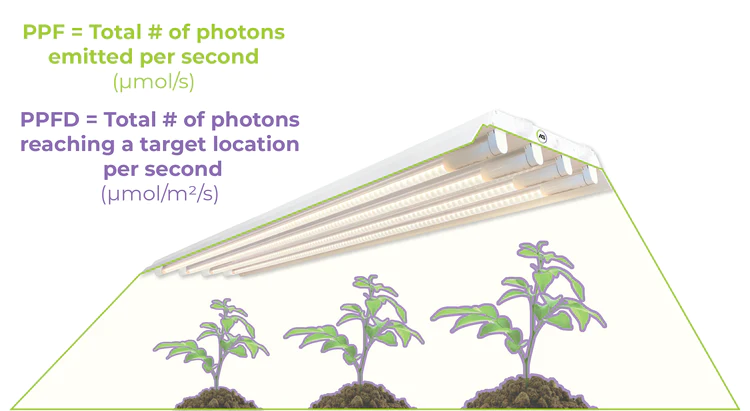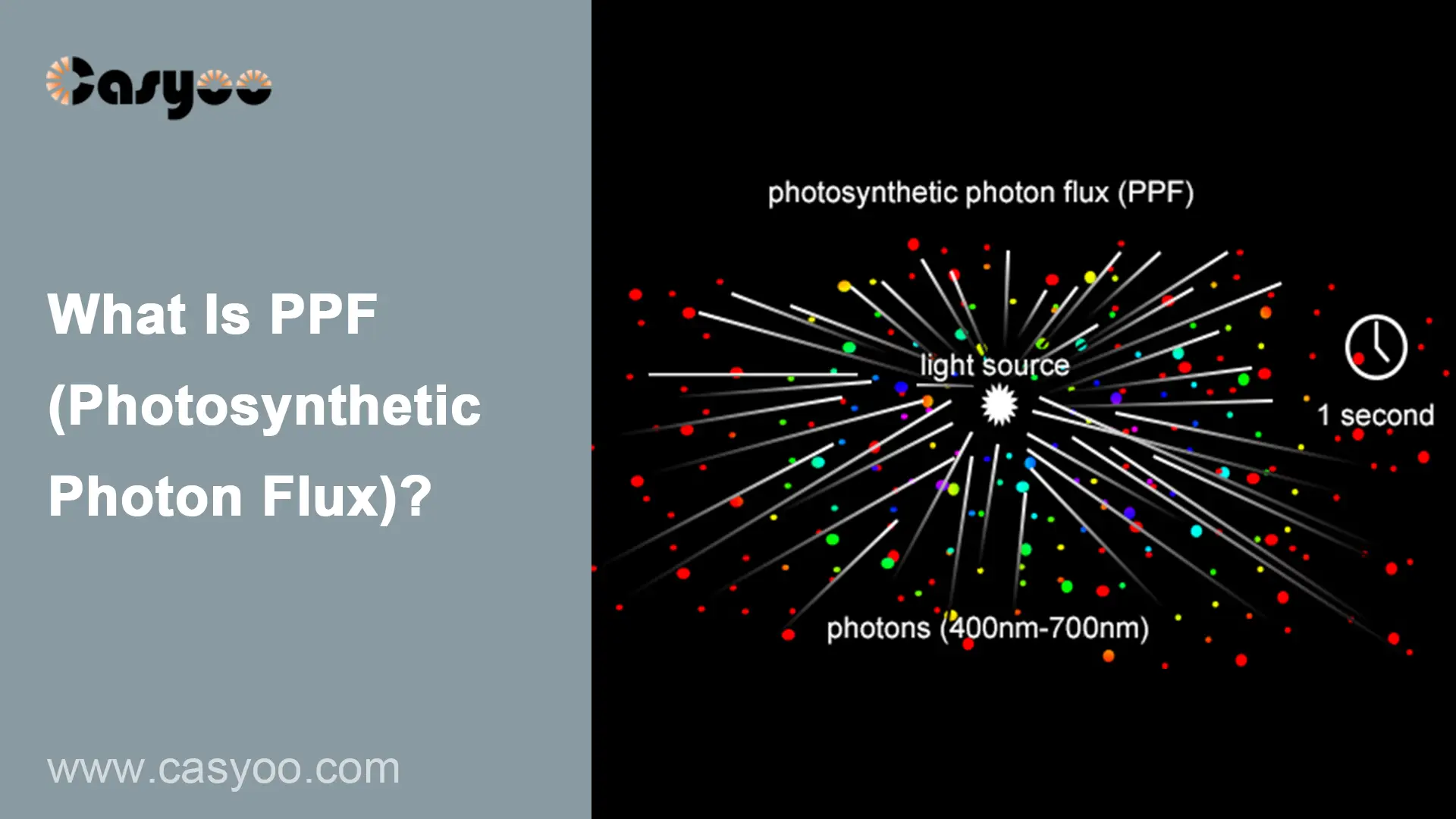What Is PPF?
PPF—the fundamental unit of electromagnetic energy—measures how much PAR a light source emits in a second. Furthermore, PPF is typically expressed in µmol/s since it is a measure of PAR produced each second.
Since PPF displays photon intensity at the light source, it is not perfect. For the plant to have the power that PPF depicts, it would need to be at zero distance. Stated differently, the plant needs to be in contact with the lighting. Please do not do this due to fire hazards.
Thus, PPF can also be misleading when it comes to grow lights because most plants are put at least a few inches of distance from your crops. However, it is still a more useful measure than Lumens.
How to Measure PPF?
A sphere test is used to measure PPF. The fixture is positioned inside a round sphere and the total photons of PAR light produced in all directions are counted. The sphere test measures the quantity of PAR photons that are released every second. The findings are reported in micromoles per second, or µMol/s.
Keep in mind that this is the total PAR photon output that a light is capable of producing, not the amount of photons that will actually reach your plants. For this, you must understand PPFD.





